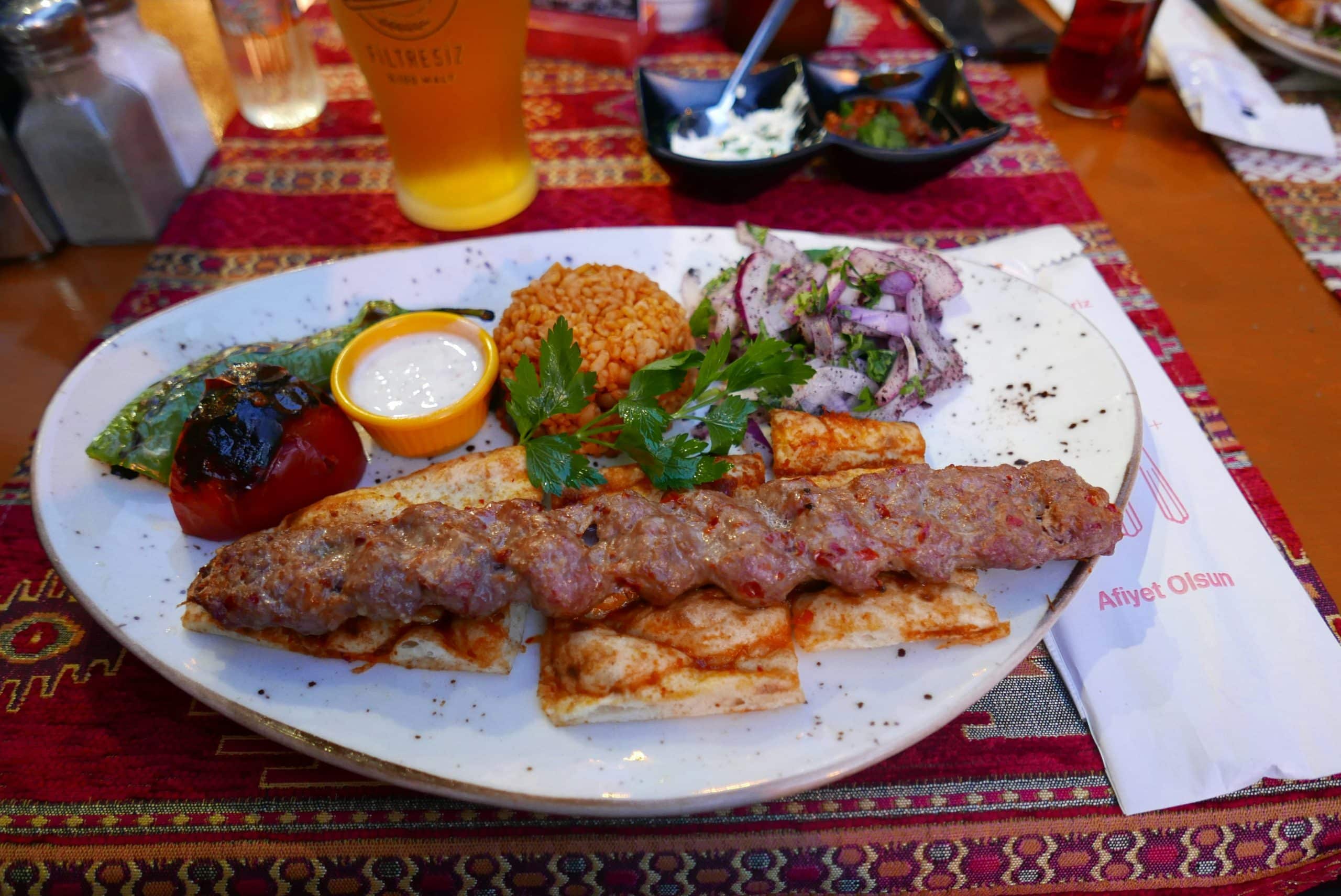The Middle East has always been a melting pot of diverse cultures and rich traditions, and this diversity is best reflected in its food. Middle Eastern cuisine is a rich tapestry of flavors and textures, with a unique blend of spices that leave an unforgettable imprint on your palate. It is a gastronomic adventure that takes you through various culinary landscapes. This article is your beginner’s guide to Middle Eastern cooking. We will explore some easy and delicious recipes, giving you a step-by-step guide to creating a flavorful Middle Eastern feast at home.
1. Middle Eastern Chicken Dish: Chicken Shawarma
Chicken Shawarma is one of the most popular Middle Eastern dishes, and it’s incredibly easy to make at home. It is a delicious dish made from marinated chicken, a blend of spices, and cooked on a slow rotisserie.
In the same genre : The art of fermentation in cooking
First, you’ll need to gather your ingredients. For the marinade, you’ll need garlic, a blend of spices including cumin, coriander, turmeric, and paprika, lemon juice, and yogurt. You’ll also need boneless chicken thighs, which absorb the marinade and remain succulent during cooking. The full list of ingredients and quantities can be seen in the photo below:
In parallel : Zero waste cooking: recipes and tips
The chicken should be marinated for at least a few hours, but ideally overnight. Once marinated, cook the chicken on a hot grill or in the oven until it’s charred and juicy. Serve it wrapped in a warm pita bread with garlic tahini sauce and a fresh salad for a complete, delicious meal.
2. Middle Eastern Salad: Tabbouleh
No Middle Eastern meal is complete without a refreshing salad. Tabbouleh is a classic Middle Eastern salad made with parsley, mint, tomatoes, and bulgur wheat, dressed with a simple lemon and olive oil dressing.
To make Tabbouleh, you’ll need fresh parsley and mint, ripe tomatoes, fine bulgur wheat, and a dressing made from lemon juice, olive oil, salt, and pepper. The secret to a good Tabbouleh is to use plenty of fresh herbs and ensure that the bulgur wheat is well-soaked and fluffy.
This salad is a fantastic accompaniment to any Middle Eastern dish, with its fresh, zingy flavors cutting through the richness of meats and sauces.
3. Middle Eastern Rice Dish: Persian Jeweled Rice
Rice is a staple in Middle Eastern cuisine, and Persian Jeweled Rice is a dish that perfectly showcases the Middle Eastern love for aromatic flavors and vibrant colors. It’s a showstopper dish, adorned with colorful jewels of pomegranate, pistachios, and dried fruits, fragrant with the scent of saffron and rose water.
The ingredients for this dish include Basmati rice, butter, onions, garlic, saffron, rose water, a variety of dried fruits and nuts, and pomegranate seeds.
To make this dish, start by making the rice base with a mix of saffron-infused water, butter, and onions. Then, add the dried fruits, nuts, and finish with a scattering of pomegranate seeds. The resulting dish is a feast for both the eyes and the palate.
4. Middle Eastern Lamb Dish: Lamb Tagine
Lamb is a common ingredient in Middle Eastern cooking, and Lamb Tagine is a classic example of a Middle Eastern lamb dish. Tagine is a slow-cooked stew that originates from Morocco, named after the unique pot in which it is cooked.
To make Lamb Tagine, you’ll need lamb shoulder, onions, garlic, a variety of spices including cumin, coriander, and saffron, and dried apricots. Additionally, you’ll need a special Moroccan spice blend called Ras El Hanout, which adds a unique flavor to the dish.
The key to a good Lamb Tagine is to slow-cook the lamb until it’s falling off the bone. The combination of spices, tender lamb, and sweet apricots makes this a hearty, warming dish that’s perfect for a cold day.
5. Middle Eastern Sauce: Tahini Sauce
Tahini is a sesame seed paste that’s a staple in Middle Eastern cuisine. It’s used in a variety of dishes, from appetizers to desserts, and is the base for many sauces and dips.
To make a basic Tahini sauce, you’ll need Tahini paste, lemon juice, garlic, and water. You can add other ingredients like herbs or spices, depending on what you’re using the sauce for.
Tahini sauce is incredibly versatile. You can use it as a dressing for salads, a dip for vegetables, or a sauce for grilled meats. It adds a creamy, nutty flavor that complements the robust flavors of Middle Eastern dishes.
Cooking Middle Eastern dishes at home can be easy and fun. With the right ingredients and recipes, you can recreate the flavors of the Middle East in your own kitchen. Happy cooking!
6. Middle Eastern Bread: Pita Bread
One cannot talk about Middle Eastern cuisine without mentioning Pita Bread. This versatile, pocket-shaped bread is a staple in many Middle Eastern countries and is served with most meals. Whether used to scoop up hummus, wrap around grilled meats, or simply enjoyed on its own, Pita bread is an essential part of any Middle Eastern dining experience.
The basic ingredients for Pita Bread are flour, yeast, sugar, salt, and water. This simple list transforms into a soft, fluffy bread with a hollow center perfect for stuffing with your favorite fillings.
Making Pita Bread at home is a fulfilling process. After mixing and kneading the dough, it’s left to rise until it doubles in size. It is then divided into balls, rolled thin, and baked at a very high temperature. The high heat causes the dough to puff up, creating that signature pocket.
7. Middle Eastern Side Dish: Saffron Rice
The Middle East is known for its various rice dishes and one that stands out in its simplicity and flavor is Saffron Rice. Saffron, the world’s most expensive spice, lends this dish a beautiful golden hue and a unique, aromatic flavor.
To make Saffron Rice, you’ll need Basmati rice, saffron threads, olive oil, onion, and chicken or vegetable broth.
The saffron threads are first soaked in hot water to release their flavor and color. Then, onions are sautéed in olive oil until golden, the rice is added and stirred until coated, and the saffron water and broth are poured in. The rice is left to cook until it absorbs all the liquid and becomes tender and fluffy.
Conclusion
Middle Eastern cooking is an art form that is steeped in rich traditions and cultures. The ingredients used are simple and easily available, but the way they are combined and prepared results in dishes that are full of complex flavors and textures. By learning these beginner-friendly recipes, one can embark on a fascinating journey through the Middle Eastern culinary landscape, right from the comfort of their own kitchen.
The key to mastering Middle Eastern cuisine lies in understanding its unique blend of spices and flavors, the importance of using fresh ingredients, and the art of balancing flavors to create dishes that are not only delicious but also visually appealing. Whether you’re trying out Chicken Shawarma, whipping up a Tahini sauce, baking your own Pita bread, or preparing a vibrant side dish of Saffron Rice, you’re sure to impress your guests with your culinary skills.
As the famous Middle Eastern saying goes, “Food is a language of love”, and these dishes certainly embody that sentiment. As you continue to explore and experiment with Middle Eastern recipes, you’ll find yourself falling in love with its rich flavors, vibrant colors, and diverse textures. So, grab your apron, roll up your sleeves, and get ready to embark on a culinary journey to the Middle East. Bon Appétit!











